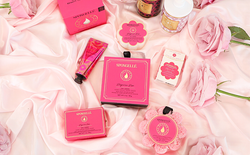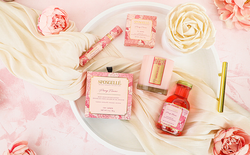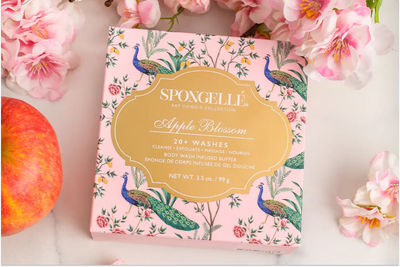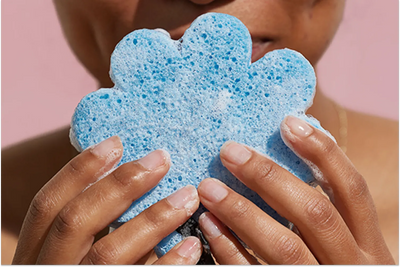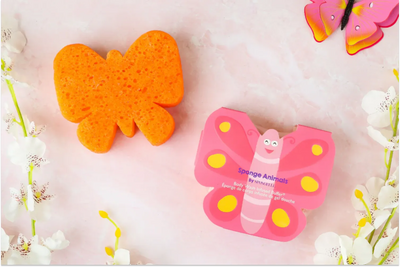Over time, the cells that make up our skin have done their job and need to be replaced by new healthy ones. The cells do not necessarily know they need to hit the road and some end up staying past their welcome. When dead skin cells accumulate on our body it can lead to calluses, pores getting clogged, possible breakouts, and much more.
In order to remove dead skin cells, you can assist your body with exfoliation. This is simply the process of chemically or physically removing the dead cells.
Let’s talk about why you get dead skin in the first place, how to prevent it, and when you should be exfoliating.
Why Do We Get Dead Skin?
The cells in our body go through a natural process of aging. They start healthy and vibrant but after exposure to the sun, our environment, and the process of aging, they eventually die.
When these dead skin cells aren’t removed they can cause a pile-up resulting in your skin looking dry and dull. There are a few factors that contribute to this pile-up.
Skin Dryness
Without the proper hydration in your skin, it can result in the cells dying faster. This can lead to an excess of dead skin. Keeping moisturizing products on our skin is an important step in a skincare routine!
Age
As we age, pretty much everything slows down including how quickly our skin cells can turnover. This can be another reason that dead skin cells may start to build up.
There are many factors that contribute to how our skin looks and how it feels. Damage caused by the environment, the natural aging process, dehydration, and even how we clean our skin are factors in how quickly skin cells die. Exfoliation is one way we can make sure that we are revealing the healthy skin cells waiting to be on display.
How To Exfoliate
It’s important to know your skin type prior to exfoliation. The last thing you want to do is cause any unnecessary damage or irritation to your skin. Regular exfoliation benefits include improvement in the elasticity of your skin, improvement in how your skin looks, and may result in fewer blemishes.
Physical exfoliation and chemical exfoliation are the two forms of exfoliation.
Physical Exfoliation
Physical exfoliation is just like it sounds; it's the removal of dead skin cells by physically removing them. This can be accomplished with skin buffers, pumice stones, cleansing scrubs, or even dry brushes.
Chemical Exfoliation
There are many products and procedures that use enzymes and chemicals to aid in the removal of skin cells. We recommend that you are mindful of your skin type if you are thinking about this form of exfoliation. Do your research, patch test your skin, and be sure to follow directions with any over-the-counter products for exfoliation (especially if you have sensitive skin!).
How To Prepare Your Skin Prior to Shaving
Who doesn’t want an unbelievably smooth shave? If you’re looking for a smooth shaving experience, you are going to want to exfoliate prior to shaving. We have talked a lot about dead skin cells piling up on our bodies.
Picture a car driving down a road with a bunch of potholes and bumps. You wouldn’t have a very smooth ride under those conditions. Prior to exfoliation, your skin is similar to that example. In order to achieve a smooth shave we really need to eliminate the dead skin cells. The last thing you want is to clog up your razor with dead skin cells that could’ve been removed. Here are some tips.
1. Wet Your Skin Before Shaving
Shaving on dry skin has the potential for irritation. If you don’t wet your skin you can increase the chance of unwanted irritation, or, worst-case scenario, a cut. You want your skin as soft and supple as possible prior to applying your razor to shave.
It may even be beneficial to shave after you have already washed. This will allow for ample time for your skin to become soft in the water.
2. Check Your Water Temperature
You don’t want your water to be too hot or too cold. If you’re anything like us, you get goosebumps the minute the water is even lukewarm. You definitely do not want goosebumps while shaving.
3. Exfoliate
You don’t want a rough surface prior to shaving. We also don’t want to ruin our brand new razor by clogging it with a bunch of dead skin. We want a smooth even surface to start our shave with. Therefore, you should exfoliate before you shave.
We enjoy using multi-purpose products that can cleanse, exfoliate, massage, and nourish all in one. Products that serve multiple purposes allow us to save precious time. We especially love a product that is bacteria-resistant so that we can also get more than one use. No one wants to worry about bacteria accumulating on their loofah or sponge!
4. Use the Right Products
When it comes to shaving you want to make sure you are replacing your razor on a regular basis. The blades of a razor can dull with each use, potentially increasing the risk of a knick. Razors can also become clogged, so it’s important to check them prior to usage.
We also recommend finding a product that has specifically been created for shaving. That way you know that you are offering your skin the hydration it needs to keep it supple and soft.
How To Moisturize After You Shave
We love a moisturizer that provides hydration from neck to toe. After you shave you are going to want to follow a few tips for adding moisture back to your skin.
1. Close Your Pores
The pores on your skin become open when exposed to warm water. Once you have removed the product you used to shave your skin, you will want to close those pores back up. This can be accomplished by rinsing with cold water.
We aren’t suggesting that you blast yourself with cold water to close your pores. You can also use a cup filled up with some cold water and splash your legs. If you’re really lucky and have a removable shower head, you can spray your legs down!
2. Moisturize Directly After You Shower
For your best chance of locking in moisture, you want to moisturize right after you shower. Patting dry is a great way to save some of the moisture from the shower. Your skin deserves pampering after the exfoliation and shaving. Adding moisturizer after you shave can also help prevent dry and itchy skin.
Summary
We are happy to report we solved the mystery! You should exfoliate before you shave. We now know that it is important to establish a little bit of a routine when we want to maximize our shaving experience.
Exfoliation and the right tools will ensure you have a smooth shave. Taking care of our bodies makes us look good and feel good. We know that it isn’t always practical to shave every day, but when you do, you should make every effort to make it count.
Use products you love and create a ritual that you will come to enjoy. We always find that if we love the products we are using, grooming can feel exciting instead of feeling like a chore! Investing in an amazing exfoliator, a great razor, and a hydrating moisturizer will change your shaving experience.
When we were younger we were totally guilty of a dry shave. We may have even been guilty of all the things we advised you against doing. Now that we know better we are as committed as ever to creating a five-star experience for ourselves. We highly recommend you do too!
Sources:
Meaning of Exfoliating: What Is It, Why You Should, and How to Start | Healthline
Want a Smooth, Safe Shave Every Time? Try These Tips – Health Essentials | Cleveland Clinic
Remove Dead Skin from Face: The Best and Worst Ways to Do It | Healthline


